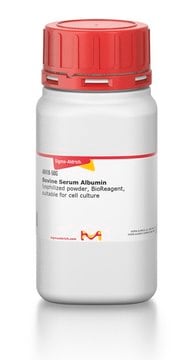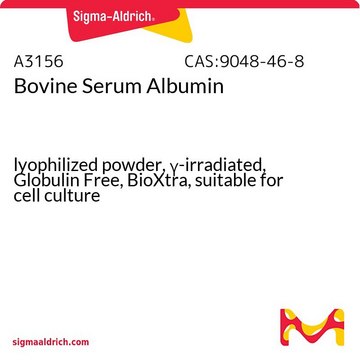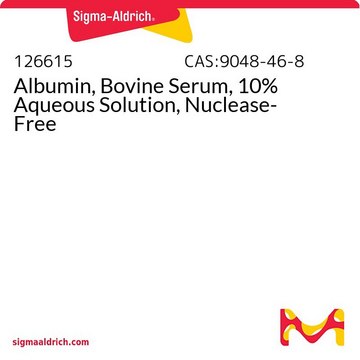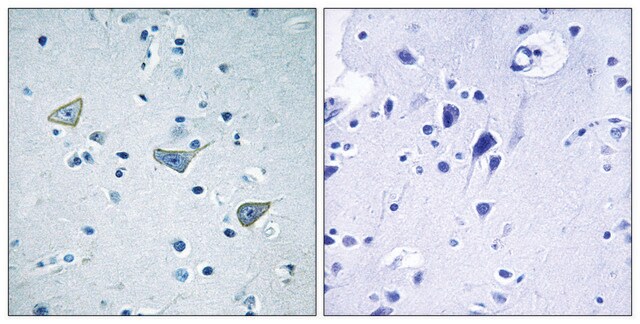A7979
Bovine Serum Albumin solution
35% in DPBS, sterile-filtered, BioXtra, suitable for cell culture
Synonim(y):
Albumin solution from bovine serum, BSA solution
About This Item
Polecane produkty
pochodzenie biologiczne
bovine
opis
endotoxin tested
sterylność
sterile-filtered
linia produktu
BioXtra
Próba
33-37% total protein basis (UV)
Formularz
liquid
pochodzenie
USA origin
stężenie
35% in DPBS
metody
blocking: suitable
cell culture | mammalian: suitable
zanieczyszczenia
≤1000 EU/mL Endotoxin level
pH
6.5-7.5
obecność zanieczyszczeń
Mycoplasma Test by Barile On raw material, none detected
Warunki transportu
ambient
temp. przechowywania
2-8°C
Opis ogólny
Zastosowanie
Kod klasy składowania
10 - Combustible liquids
Klasa zagrożenia wodnego (WGK)
WGK 1
Temperatura zapłonu (°F)
Not applicable
Temperatura zapłonu (°C)
Not applicable
Środki ochrony indywidualnej
Eyeshields, Gloves, multi-purpose combination respirator cartridge (US)
Wybierz jedną z najnowszych wersji:
Masz już ten produkt?
Dokumenty związane z niedawno zakupionymi produktami zostały zamieszczone w Bibliotece dokumentów.
Klienci oglądali również te produkty
Produkty
This page segues to comprehensive insights on how serum albumin and other important cell culture components affect the performance of serum-free cell culture systems used for biomanufacturing heterologous proteins including monoclonal antibodies. The page introduces the in vitro chemistry and biochemistry of albumin. These insights may also be applied to ex vivo and tissue engineering applications.
Nasz zespół naukowców ma doświadczenie we wszystkich obszarach badań, w tym w naukach przyrodniczych, materiałoznawstwie, syntezie chemicznej, chromatografii, analityce i wielu innych dziedzinach.
Skontaktuj się z zespołem ds. pomocy technicznej





